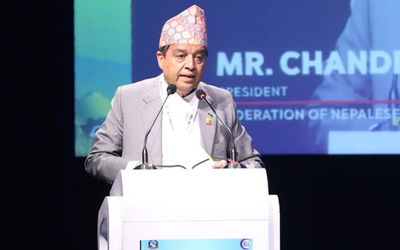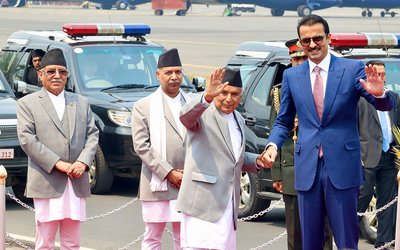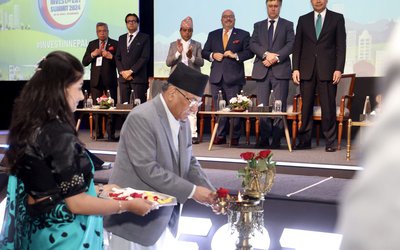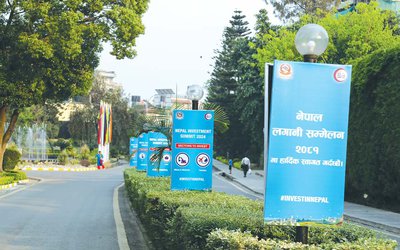A new piece of legislation has been proposed to amend the Social Practices (Reform) Act of 1976 in order to curb the social degradation, unproductive expenditures, pompous displays of wealth, and financial burdens brought on by social malpractices in Nepali society. Without the appropriate legislation, such ills cannot be cured.
A comparative assessment of the old Act and the new Bill is outlined below. The focus of this analysis is solely on the tradition of dowry, which epitomises the problems mentioned above:
Comparative Review:
1. The Bill proposes to add and remove various provisions to and from the prevalent Act. According to section 2 (a) of the Act, ‘social practice’ includes: weddings, bratabandha, (a coming-of-age ceremony in Hinduism), chudakarma (the rituals around cutting a boy’s hair for the first time), pasni (a ceremony where a child is fed rice for the first time), nwaran (a naming ceremony held eleven days after the birth of a child), birthday celebrations, chhaiti (a Hindu ritual observed on the sixth day after birth), budho-pasni (a ceremony to celebrate one’s eighty-fourth birthday), and pitri-karya (rituals performed in honour of one’s deceased parents, grandparents, and ancestors). The Bill, on the other hand, broadens this definition by changing it to mention: birthday celebrations, weddings, rituals related to death, pitri-karya, as well as ‘rituals and ceremonies associated with customs, traditions, and religion’—opting, with this last phrase, to replace bratabandha, chudakarma, pasni, nwaran, chhaiti, and budho-pasni. The implication is that ‘rituals and gatherings associated with customs, traditions, and religion’ include all of the redacted ceremonies and others.
2. A provision in the Act defines ‘close relatives’ as paternal and maternal relatives within four generations in the family tree of the person on whose behalf a ceremony is held. The term includes cousins that are obliged to mourn the death of the person for thirteen days, nephews and nieces, children of the person’s daughters, children of paternal and maternal aunts, sons-in-law, brothers-in-law, and close friends. In the Bill, however, the term has been elaborated under separate headings related to different contexts: groom’s side, bride’s side, local bodies, as well as moveable and immoveable property.
3. The Act includes several provisions relating totilak and dowry, but these provisions have not been defined clearly. The Bill does a good job of this in sections 2 (b) and (c).
4. In the current Act, the section relating to the prohibition on tilak states that an offending party can be liable for a fine of NPR 12,000 to 25,000 or a prison sentence not exceeding 30 days, or both, and that the property or money given as tilak shall be forfeited. The Bill, in relation to this, states that the tilak shall be forfeited, and an appropriate fine shall be imposed (based on the tilak) and/or a prison sentence not exceeding 90 days given.
5. The section about restrictions on dowry, in the prevalent law, states that no more than NPR 10,000 or anything equivalent in market value may be given as dowry—in addition to the jewellery and ornaments worn by a bride on the day of her wedding—not even by free will or obligations towards tradition. The proposed legislation raises that amount to NPR 100,000.
6. In case of a violation of the above provision, the Bill proposes to confiscate the dowry, as well as to impose an appropriate fine (based on that amount) and/or a prison sentence of no more than 30 days. If a dowry—more extravagant than the proposed limit—has not yet exchanged hands, a fine of up to NPR 50,000 and/or a prison sentence of up to 15 days can be imposed. Taking into consideration that it is often easier for the party accepting the dowry to pay fines, the new law should focus on prison sentences in order to be effective.
7. The Bill makes new provisions for making void marital agreements made on the basis of tilak and dowry (section 5), and for preventing potential rejections or obstruction of marital ties by a groom’s side—with reasons related to dowry or tilak (section 6). Similarly, section 7 states that guests invited to a wedding can give no more than NPR 200, or gifts worth that amount, to the bride and/or groom. This last provision is extremely impractical.
8. Section 8 of the Bill states that no more than 15 people (excluding the groom) can attend a wedding from the groom’s side. The corresponding figure is 21 on the bride’s side.
9. Under a new provision, a groom’s party is allowed to gift the bride up to 40 grams of gold, while the bride’s side is allowed to give the groom no more than 20. Instead, other jewellery, clothes, or gifts worth that market value may also be given by free will. In this regard, the Bill attempts to include some existing practices.
10. The section concerning restrictions onjanta states that no more than 75 people, including s marching band and porters, can attend a procession. Any violation of this provision warrants a fine of up to NPR 25,000. In the Act, the corresponding penalty is NPR 10,000 and/or 15 days of imprisonment.
11. A new provision has been proposed whereby no more than 150 people can be invited to any wedding reception. Failure to comply would lead to a fine worth twice the cost of the entire feast and/or up to one month’s imprisonment.
12. Sections 15, 16 and several others have elaborated on provisions regarding restrictions during religious, social, and charitable functions—much needed in the Act.
Providing a false statement of expenditures for a wedding, for example, can lead to a fine of up to NPR 50,000. But how practical is this provision? It will be tedious for people to provide such statements accurately. Besides, there is no mechanism to check the accuracy of such statements. On what basis can they be proven inaccurate?
13. Section 19 of the Bill—which prohibits gatherings related to ‘social practices’ from happening in certain places—needs further clarification.
The proposed Bill contains several new provisions: against incitement and conspiracy (section 20), for additional penalties (section 21), to stall the promotion of public officials (section 22), to reward those who file complaints regarding relevant malpractices (section 24), to protect an informant’s identity (section 25), to keep a record of those who have been penalised under the provisions of the Bill (section 26), regarding the time limit for filing complaints (section 27), against dropping cases once registered [sections 31 (3), (4), and (9)], for starting a trial and penalising the guilty as per prevalent laws (section 32).
Conclusion:
Social practices are filled with complexities. But the Bill attempts to comprehensively regulate them. Thus, while some of the new provisions are positive, others are impractical: for instance, the provision that enforces a fine for inviting more than 150 people to a wedding reception. Nepalis tend to live in joint families and maintain strong ties with their extended families. The above-mentioned provision is thus impractical in the Nepali context. Not everyone has large families, but different groups of people inherit their own social realities.
Furthermore, the Bill seems to address only the social practices of a particular religion. The social realities of Muslims, Buddhists, and other groups have been ignored. The Bill needs to be improved from this angle as well.
Finally, the implementation of this piece of legislation must be occasionally monitored by relevant bodies. The biggest challenge lies in effectively putting these laws into action.
This research and recommendation paper prepared by legal expert Motikala Subba Dewan for the Nepal Constitution Foundation has been finalised based on the inputs given by various pressure groups: women, indigenous communities, Dalits, Madeshis, youth, and others. The NCF would like to thank Gopal Dahal, Kalpana B.K., Shiva Bisankhe, Anita Sapkota, Sandhya Basnet, Pradip Rajbamshi, Basanti Shrestha, Om Kumari Saha, Tara Maharjan, Rajeshwori Shrestha, Kripasur Niraula, Purna Rajbamshi, Bibek Poudel, Yam Bahadur Kisan, Phurpa Tamang, Namit Wagle, Sabin Rana, Ganesh Datta Bhatta, and Dr. Bipin Adhikari.
This research has been conducted with the help of The Asia Foundation (TAF). But the thoughts presented here belong to the author; they do not represent TAF or its point of view.
- QATAR AMIR’S STATE VISIT: Five Agreements
- Apr 28, 2024
- TANAHU HYDROPOWER PROEJCT: A Significant Achievement
- Apr 15, 2024
- AMBASSADOR HANAN GODAR: Sharing Pain With A Nepali Family
- Mar 30, 2024
- VISIT OF KfW AND EIB TO NEPAL : Mission Matters
- Mar 25, 2024
- NEPAL BRITAIN SOCIETY: Pratima Pande's Leadership
- Mar 24, 2024
















